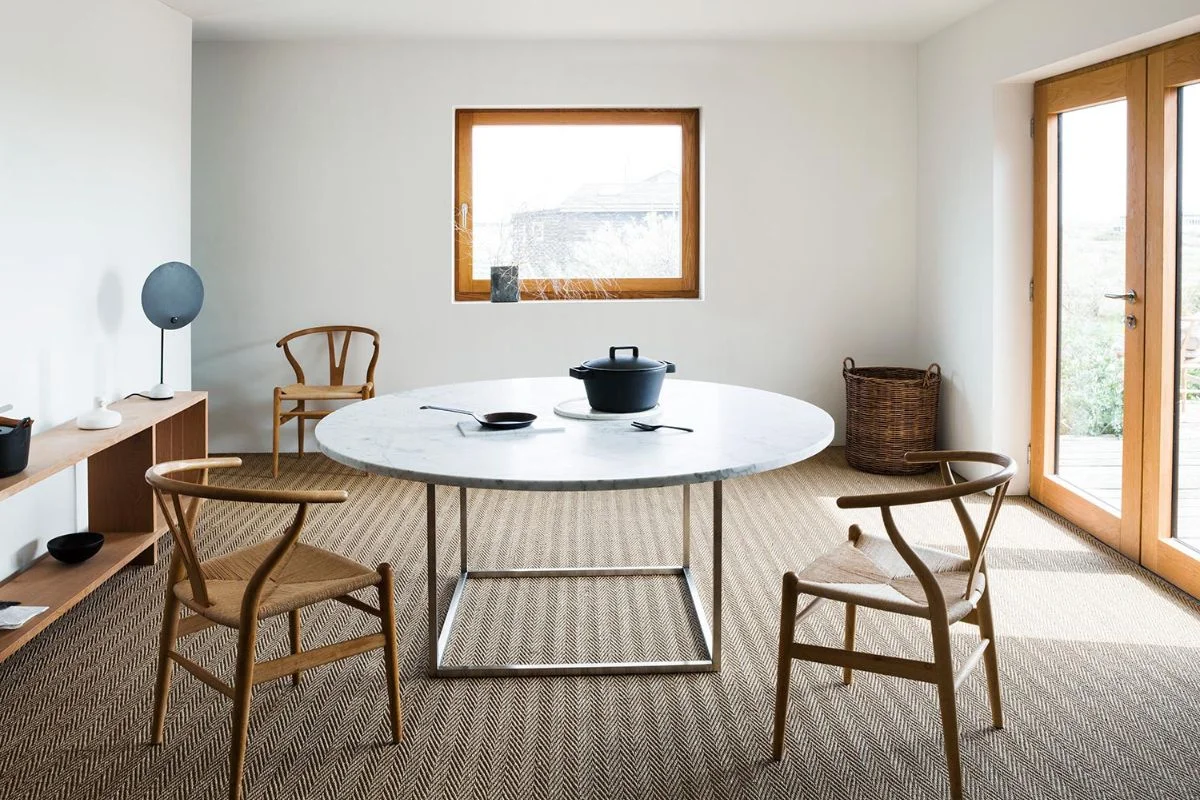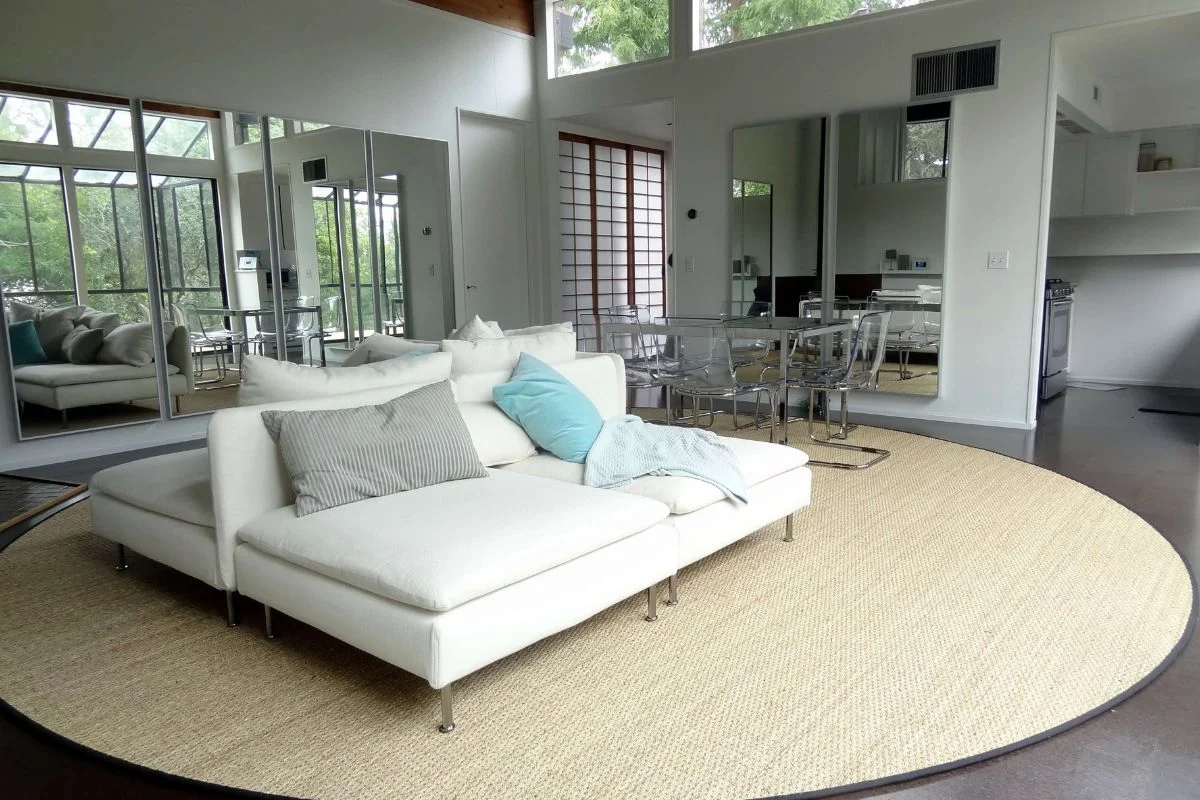Exploring the Beauty and Benefits of Sea Grass Carpets
Welcome to a journey of exploration into the captivating world of sea grass carpets. In an era where sustainability and natural living are becoming increasingly important, sea grass carpets offer a unique blend of beauty, durability, and eco-friendliness. As we embark on this exploration, we’ll delve into the intricacies of sea grass, uncovering its inherent qualities, benefits, and the aesthetic charm it brings to any space. Join us as we unravel the allure and practicality of sea grass carpets, inviting you to discover why they stand as a sustainable flooring choice for the modern home.
Brief Overview of Sea Grass Carpets:
Sea grass carpets are natural flooring options woven from dried sea grass fibers, offering a sustainable and eco-friendly alternative to traditional carpets. Derived from tall grasses growing in coastal regions, sea grass is known for its durability, unique texture, and inherent beauty. These carpets are crafted using traditional weaving techniques, resulting in versatile floor coverings that add a touch of organic elegance to any space. With their environmentally conscious production process and aesthetic appeal, sea grass carpets have gained popularity among homeowners seeking sustainable and stylish flooring solutions.
Definition and origin of sea grass
Sea grass refers to a group of flowering plants that thrive in underwater environments, primarily in coastal regions and shallow waters. Unlike seaweed, which is algae, sea grasses are vascular plants with roots, stems, and leaves. They play a crucial role in marine ecosystems, providing habitat and food for various marine species while also contributing to coastal stabilization and water quality.
Sea grasses are typically found in coastal areas around the world, including saltwater marshes, estuaries, and shallow bays. They are adapted to survive in saline environments and can tolerate fluctuating water levels and conditions.
The origin of sea grasses dates back millions of years, evolving to inhabit coastal waters and fulfill vital ecological functions. Today, they are recognized for their ecological significance and are the subject of conservation efforts to protect and preserve coastal ecosystems.
In the context of sea grass carpets, the fibers used to create these floor coverings are harvested from specific species of sea grasses, such as seagrass (genus Zoster) and eelgrass (genus Vallisneria). These natural fibers are renowned for their strength, resilience, and aesthetic appeal, making them ideal materials for crafting sustainable and environmentally friendly carpets and rugs.
Advantages and Disadvantage of Sea Grass Carpets
Advantages:
Eco-Friendliness: Sea grass carpets are made from natural fibers harvested from renewable sources, making them an environmentally friendly flooring option. Their production process typically involves minimal chemical treatment, reducing the ecological footprint compared to synthetic carpets.
Durability: Sea grass fibers are inherently strong and resilient, making sea grass carpets highly durable. They can withstand heavy foot traffic and retain their shape and integrity over time, making them suitable for high-traffic areas in homes and commercial spaces.
Aesthetic Appeal: Sea grass carpets have a natural, organic look and texture that adds warmth and character to any space. Their neutral tones and subtle variations complement a wide range of interior design styles, from coastal and tropical to rustic and contemporary.
Allergy-Friendly: Unlike synthetic carpets that can trap dust, allergens, and pet dander, sea grass carpets are hypoallergenic and resistant to mold and mildew. They provide a healthier indoor environment for allergy sufferers and individuals with respiratory sensitivities.
Disadvantages:
Sensitivity to Moisture: Sea grass carpets are susceptible to moisture and water damage, as prolonged exposure to moisture can cause the fibers to swell and warp. Therefore, they are not recommended for use in areas with high humidity or moisture-prone environments such as bathrooms or basements.
Staining: Sea grass carpets are prone to staining from spills and liquids, as the natural fibers absorb moisture quickly. It’s essential to address spills promptly and use caution when cleaning to prevent permanent staining or discoloration.
Limited Color Options: Sea grass carpets typically come in natural tones such as beige, tan, and brown, which may limit color choices for interior decorating purposes. While the neutral palette complements many design schemes, it may not suit every aesthetic preference or color scheme.
Texture: The texture of sea grass carpets may feel rough or coarse underfoot compared to softer carpet materials like wool or synthetic fibers. Some individuals may find the texture uncomfortable, particularly in areas where they frequently walk barefoot.
Environmental Impact and Sustainability Sea Grass Carpets
Sea grass carpets are celebrated for their minimal environmental impact and sustainable production methods. Here’s a closer look at their eco-friendly attributes:
Renewable Resource: Sea grass is a renewable resource that grows abundantly in coastal areas and underwater environments. Harvesting sea grass for carpet production does not deplete natural habitats or contribute to deforestation, making it a sustainable choice for flooring materials.
Low Energy Consumption: The manufacturing process of sea grass carpets typically involves minimal energy consumption compared to synthetic carpet production. Sea grass fibers are hand-harvested and woven using traditional techniques, reducing the reliance on machinery and energy-intensive processes.
Biodegradability: Sea grass carpets are biodegradable, meaning they naturally decompose at the end of their lifecycle without leaving behind harmful residues or pollutants. This characteristic minimizes environmental impact and reduces waste accumulation in landfills, promoting a more sustainable approach to carpet disposal.
Carbon Sequestration: Sea grasses play a crucial role in carbon sequestration and the mitigation of climate change. As they grow, sea grasses absorb carbon dioxide from the atmosphere and store it in their tissues and root systems. By incorporating sea grass carpets into indoor spaces, consumers indirectly support the preservation of coastal ecosystems and the regulation of atmospheric carbon levels.
Minimal Chemical Treatment: Unlike synthetic carpets that often require chemical treatments and additives during production, sea grass carpets are crafted using natural fibers that typically undergo minimal processing. This reduces the release of harmful chemicals into the environment and promotes healthier indoor air quality for occupants.
Sustainable Harvesting Practices: Responsible harvesting practices ensure the long-term sustainability of sea grass ecosystems. By adhering to guidelines that promote selective harvesting and habitat conservation, carpet manufacturers can help maintain the health and resilience of coastal environments while supporting local communities dependent on sea grass resources.
Maintenance and Care Tips for Sea Grass Carpets:
Proper maintenance and care are essential to preserve the beauty and longevity of sea grass carpets. Here are some tips to help you keep your sea grass carpets looking their best:
Regular Vacuuming: Use a vacuum cleaner with a brush attachment to remove surface dust, dirt, and debris from your sea grass carpets. Vacuuming at least once a week helps prevent particles from settling into the fibers and prolongs the carpet’s lifespan.
Avoid Moisture: Sea grass carpets are sensitive to moisture and water damage. Avoid placing them in areas prone to spills, leaks, or high humidity, such as bathrooms or kitchens. Promptly blot spills with a clean, dry cloth to prevent moisture from penetrating the fibers.
Sunlight Protection: Direct sunlight exposure can cause sea grass carpets to fade and deteriorate over time. Use window treatments or UV-blocking curtains to minimize sunlight exposure and protect your carpets from premature discoloration and weakening.
Rotate Furniture: To prevent uneven wear and indentations, periodically rotate furniture and heavy objects placed on your sea grass carpets. This distributes weight more evenly across the carpet surface and helps maintain its natural texture and appearance.
Use Area Rugs: Place area rugs or mats in high-traffic areas and entryways to minimize wear and tear on your sea grass carpets. These protective layers act as barriers against dirt, debris, and abrasion, preserving the carpet’s integrity and extending its lifespan.
Professional Cleaning: Consider hiring professional carpet cleaners experienced in handling natural fiber carpets to deep clean your sea grass carpets annually or as needed. Professional cleaning removes embedded dirt and stains while rejuvenating the carpet’s appearance without causing damage to the fibers.
Blot Stains Immediately: In the event of spills or stains, blot the affected area with a clean, dry cloth or paper towel to absorb excess liquid. Avoid rubbing or scrubbing, as this can spread the stain and damage the carpet fibers. Use a mild detergent solution or specialized carpet cleaner recommended for sea grass carpets to gently remove stubborn stains, following the manufacturer’s instructions carefully.
Conclusion:
In conclusion, sea grass carpets emerge as a sustainable and stylish flooring option that combines ecological responsibility with aesthetic appeal. Throughout this exploration, we’ve uncovered the unique qualities and advantages of sea grass carpets, from their eco-friendly production methods to their natural beauty and durability.





0 comments